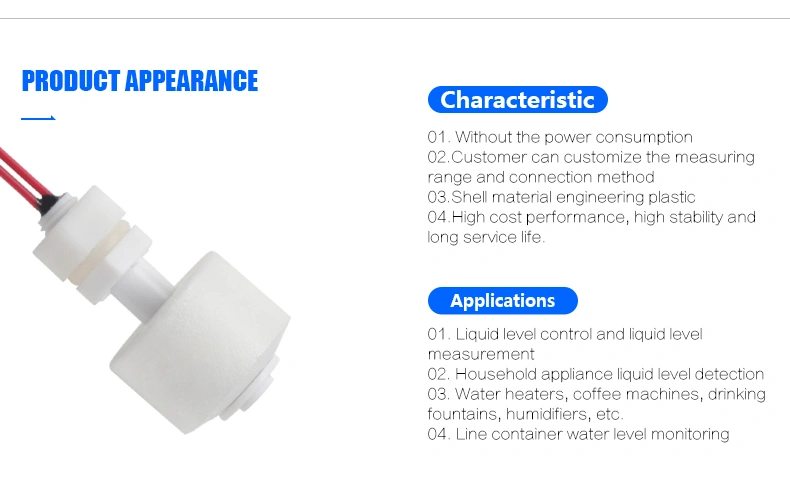
There are two main types of float switches: normally open and normally closed. In a normally open float switch, the switch is open (i.e., the circuit is not complete) when the float is at its lowest point. As the liquid level rises and the float moves upward, it triggers the switch to close (i.e., the circuit is complete), indicating that the tank is full.

In a normally closed float switch, the switch is closed (i.e., the circuit is complete) when the float is at its lowest point. As the liquid level rises and the float moves upward, it triggers the switch to open (i.e., the circuit is not complete), indicating that the tank is full.

Float switches are commonly used in a variety of applications, such as in sump pumps, water tanks, and sewage treatment systems, to control the level of liquids and prevent overflow or underflow.
